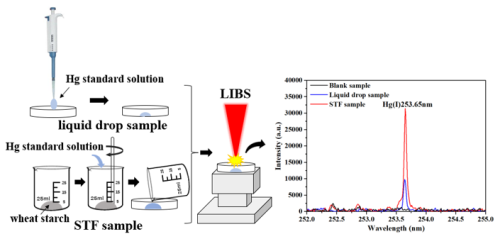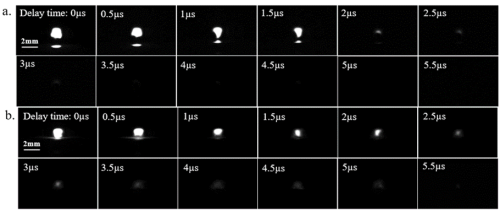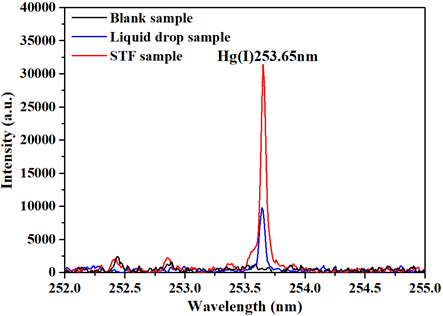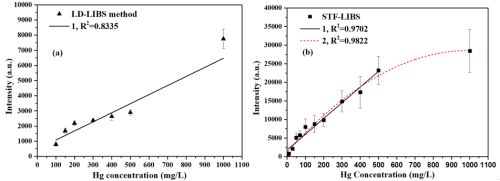Recently, a research team from Shanghai Institute of Optics and Fine Mechanics (SIOM) of the Chinese Academy of Sciences (CAS) proposed a new method to improve the detection capability of LIBS in liquid samples. The researchers utilized the solid-like behavior of shear thickening fluid (STF), and prepared liquid samples to STF samples for LIBS detection. The LIBS analytical sensitivity and accuracy were improved significantly by this method. The results were published in Journal of Analytical Atomic Spectrometry as the inside Front Cover on March 15, 2022.
Laser-induced breakdown spectroscopy (LIBS) is an atomic spectrum analysis method with the advantages of simple, rapid, and multi-element analysis. When LIBS is used to detect liquid samples, the water splashing and surface ripples lead to instability in laser induced plasma. The plasma emission intensity decreases because most of the energy is expended in the vaporization of the solvent. These greatly affect the LIBS analytical sensitivity and accuracy.
STF samples have a physical property of discontinuous shear thickening. The shear stress suddenly jumps with increasing shear rate, and produces a solid-like behavior. Researchers analyzed the time evolution of laser-induced plasma plumes and atom line emission intensities on the STF sample, found that the evolution time of plasma plumes in the STF sample was 1.57 times longer than that in the liquid drop sample, the emission intensity of Hg (I) 253.65 nm in the STF sample was 3.96 times higher than that in the liquid drop sample under the optimized parameters. Compared with direct analysis of liquid drop samples, the proposed method improved both the analytical sensitivity and the analytical accuracy of Hg in liquid samples, with the limit of detection (LoD) improved by 53.24 times and coefficient of determination (R2) increased by 14.8%.
The proposed method is simple, fast and easy to implement. It can be widely used to detect liquid samples in the fields such as water quality monitoring, solvent pollutant analysis and deep-sea exploration.

Fig. 1 Schematic diagram of the analysis process for liquid drop sample and STF sample. (Image by SIOM)

Fig. 2 The images of laser-induced plasma plumes of (a) liquid drop sample and (b) STF sample. (Image by SIOM)

Fig. 3 The LIBS spectrum of the blank sample, liquid drop sample and STF sample in 252.0-255.0 nm regions with the background spectrum removed. (Image by SIOM)

Fig. 4 Calibration curves of (a) liquid drop-LIBS method and (b) STF-LIBS method. (Image by SIOM)
Article website:
https://doi.org/10.1039/d1ja00431j
Contact:
WU Xiufeng
General Administrative Office
Shanghai Institute of Optics and Fine Mechanics, CAS
Email: xfwu@siom.ac.cn
Web: http://english.siom.cas.cn/